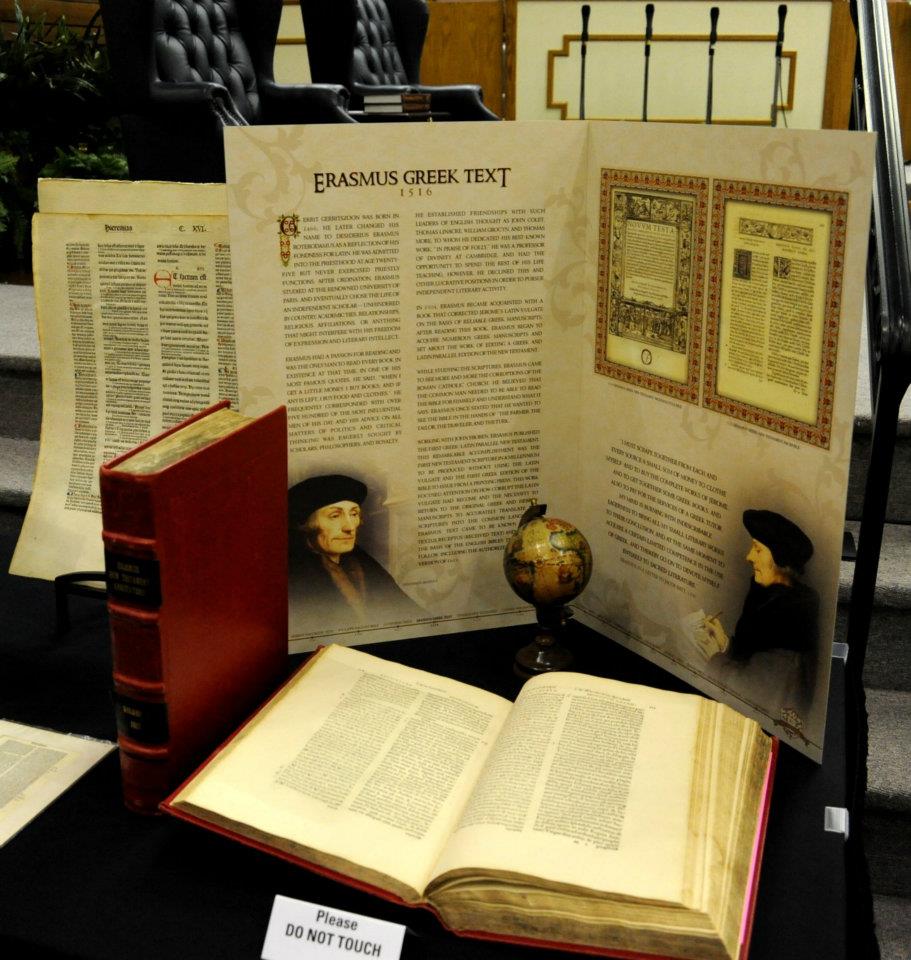|
**List: Italian Ministry
the Holy Bible ( la Sacra Bibbia )
Italian...
"Italian is a linguistic descendant of
Latin, as are all the Romance
languages. It is spoken by almost 55 million Italians, including,
besides those in Italy, more than 3 million in the United States,
one million each in France and
Argentina, and other large groups
in Yugoslavia, Switzerland, and
Brazil. It is an official
language of
Switzerland (although spoken by only about 400,000 Swiss in
Ticino Canton) and is spoken by the 17,000 inhabitants of the
Republic of San Marino. The numerous divergent colloquial
dialects of Italy are discussed below. (See
Italian: Bergamsco.)
Since medieval times the Florentine usage has been recognized as
the literary standard.
Even before the appearance of printed Italian Bibles in 1471,
translations of the Scriptures are known to have circulated. It
was
from such a version that most of the text of Jenson’s
Bible (1471)
was prepared. The only extant evidence of these early transla-
tions, however, is a few 14th-century manuscripts of Venetian
and Tuscan Gospel Harmonies. An Italian manuscript of the
whole Bible is preserved in the National Library in Paris.
Translated by Nicholas de Nardo, it was finished in
1472, a year
after the first printed Italian [b]ible was published
by a Benedic-
tine monk, Niccolo Malermi.
Between 1471, when Malermi’s version first
appeared, and 1530,
when Brucioli brought out his New Testament, stirring
things
had been happening in the Church, even in Italy. Both Human-
ism and the Swiss and German revolts against papal power
and
doctrine had their influence on such men as Lefèvre in Paris.
Similarly, in Venice, Brucioli felt the breath of the
new age.
Early champions of Florentine independence, Brucioli
and his
brothers, who were printers, were exiled to Venice. There
Brucioli made a fresh translation - from the Hebrew
and
Greek,
he claimed - and in his prefaces and notes attacked the policy of
withholding the Scriptures in the vernacular from the common
people, and otherwise showed considerable sympathy with the
principles of the Reformation. Yet he is said never to have left
the Roman communion. ....
A revision of Brucioli’s version for
Geneva’s Protestant refugees
was printed in Geneva in 1562, and the Italian Lyons Bible of
1551 employed Calvin’s preface to the
Olivetan Bible. Yet the
first Protestant Italian Bible is considered to be that of Giovanni
Diodati, whose family had fled religious persecution in Italy.
Though born in French-speaking
Switzerland, this noted
Genevan scholar gave Italy a Bible that is a literary classic,
written with a flavor of pure Tuscan in the tradition of Dante
and Pet., as well as a work of able scholarship. Despite Pope
Pius IV’s prohibition on reading the Bible in the vernacular
(1564), Diodati’s version, upon its publication in
1607, met with a
success almost as immediate and widespread as Luther’s had
almost a century earlier." --1000 Tongues, 1972 [Info only]
"Revisions and reprints of...Diodati
Bibles have had enormous circulation both inside and outside
Italy, and for three centuries they served as the primary Italian
Scriptures."--1000 Tongues, 1972 [Info only]
"Spoken by over 40,000,000
people in Italy
and in Italian settlements in other parts of the
world. Manuscript translations of the Scrip-
tures were extent in northern Italy at least by
the end of the thirteenth century. The trans-
lators are not known, but the evidence of
Vau-
dois and
Provençal influence is
strong."--1000 Tongues, 1939 [Info only]
|
"1551 New Testament Lyons
Translated by Massimo Teofilo."--1000 Tongues, 1972
[Info only: ?]
|
"A Protestant version of the New Testament was
published in 1561, and in 1562 the entire Bible." per TT [Info
only]
"1607 Bible 1641 Bible
(revised) Geneva
Translated by Giovanni
Diodati. In revised
form it still serves as the
standard Bible of Italian Protestants. Revisions during the 18th and
19th centuries were: Mattia d’Erberg, 1712; Johannes D. Muller,
1744; G. Rolandi, 1819; T. P. Rosetti (for the Society for the
Promotion of Christian Knowledge), 1850; and S. Ferretti,
1854."--1000 Tongues, 1972 [Info only]
|
ITALIAN Diodati version--1000 Tongues, 1939 [Info only:
"1894" John 2:22b-3:1a, 12-18a unknown.]
ITALIAN DIODATI VERSION--1000 Tongues, 1972 [Info only:
"1939" Mark 1:2 correct (profeti = prophets).]
**File: Italian Bible History (3)--1860
S. Bagster [Info only]
**File: Italian Critical Text History
**File: Italian--Other Bible History
|

